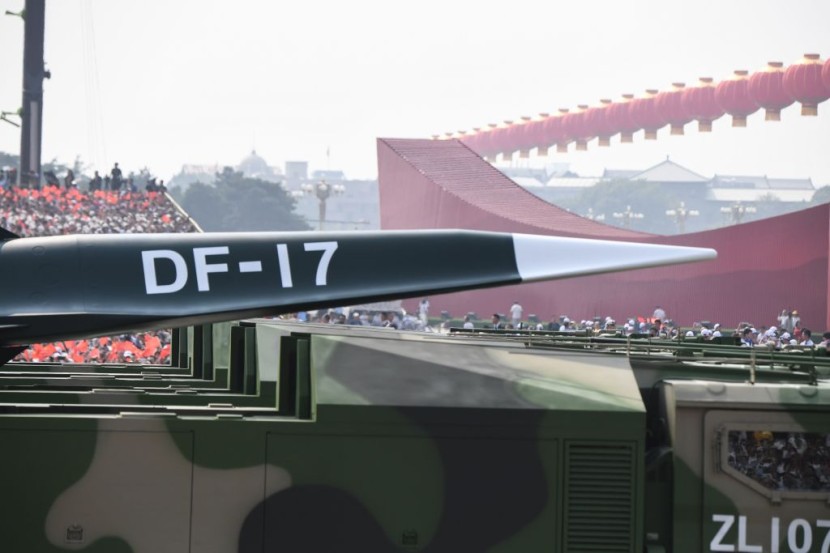
The Peoples Republic of China increases Chinese hypersonic missiles to deter the US and its allies in the Indo-Pacific. As these deterrents go, these weapons could turn the tide in Beijing's favor.
But the mainland government said they would not use nukes first and wanted assurance from Washington if they lose in a conventional conflict that weapons of destruction will not be an option. But on the same note, the PRC wants a peaceful solution to the Taiwanese problem.
Chinese fast and deadly missiles
The super-fast missiles, Dong Feng 17 or DF-17, can fly at 7,680 miles or Mach 10+ launched from land and has a standoff range of 1,600 miles. A spokesman for the Defense Ministry of China, Wu Qian, informed that the DF-26 with a 3,000 miles range will be made in vast quantities, reported the Express UK.
Two years back, the DF-17 was revealed in a four-minute video that was touted as hypersonic and unstoppable. Better yet, it was too fast to intercept by anti-missile defenses, cited the Sun UK.
The missile has a hypersonic glide vehicle (HGV) that is multi-use; China can even use a nuclear warhead on it. But the Peoples liberation army is developing the DF-27, which comes after the DF-26, which will have a range of 5,000 miles. It can hit Hawaii, said the source as a potential target.
China has a wide selection of anti-aircraft carrier weapons like DF-21D and DF-26 "aircraft carrier killer" #missiles. South China Sea is fully within grasp of the #PLA; any US #aircraftcarrier movement in the region is at the pleasure of PLA: analysts. https://t.co/X5L0foka6Q pic.twitter.com/rEPjp9gqAZ
— Global Times (@globaltimesnews) July 4, 2020
According to the Military analyst Malcolm Davis, Australian Strategic Policy Institute (ASPI) remarked the DF-17 and Chinese hypersonic missiles has been mentioned in the US Department of Defense's in 2021 regarding China's military technology, noted ASPI.
He added that Beijing's increasing number of nuclear weapons and they are going to a launch-on-warning posture, with capacity for several degrees of tactical readiness. It opens up; if the Peoples' Republic of China is reconsidering its no first use policy when the US might resort to it any time,
The US Department of Defense said the no first use policy is just a declaration and suggested the Chinese might not follow it. A US submarine deal started nuclear arms to deter China.
The Department of Defense forgot to add that Joe Biden pushed the AUKUS defense deal, which effectively changed the nature of the conditions. Where the ASEAN is nuclear-free comes a change in the future.
Washington demands that the PRC be more open about their nuclear capability, but China has not ascribed to any atomic treaty yet.
The US wants to force Beijing to accede to its demands
Mr. Davis added the happenings in the timing, not only the conflict over Taiwan but also Beijing. The White House has no first use policy yet. It might be in 2022, which concerns Xi Jinping.
Davis stated that China is increasing its deterrence posture; to use its nuclear option as a deterrent in a conflict; keep it as a last resort. But the PRC does not trust the US to fight a conventional war if it loses much.
Concern if the PLA and its units will reclaim Taiwan is causing high tensions because of China's claims. Even now, the PLA is training on fake made-to-scale aircraft carriers for when it comes to dealing with the real thing.
But Zhao Lijian made it clear that the US is not crossing Beijing's red line, and remember, Chinese hypersonic missiles might do the talking and should back off.








